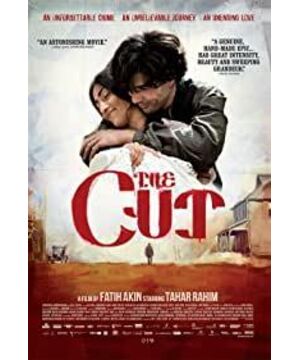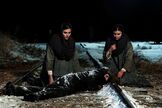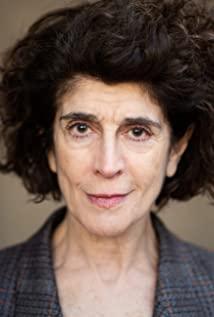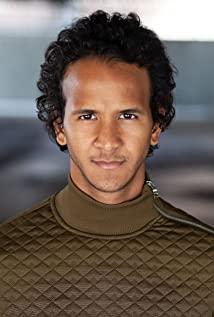Reflected in the history of film, although there are not many works about this historical tragedy, it is not uncommon. In 2002, Canadian Armenian famous director Atom Igyan filmed a shocking work containing the memories of immigrant families under the name of Alara Mountain (now in Turkey), which symbolizes the national spirit. As today’s Turks, although they can discuss this history freely in Istanbul’s bars, if they are allowed to make a film, it will always be in conflict with the law.
Fortunately, Faith Akin is a famous Turkish-German director, but he has a large number of masterpieces about his blood hometown, and he is often directly regarded by the audience as a contemporary Turkish film giant. To examine this period of history by him requires not only a historical perspective and political courage, but also puts himself in an awkward situation-yes, the Ottoman Turkish army is a cruel murderer, but he cannot always portray his own nation as heinous. Bar?
Faced with huge emotional dilemmas and historical ambitions, he made great efforts to make his new film "Cut" the final chapter of his "Trilogy of Love, Devil and Death". Love is "Go Forward" in 2004. The vigorous and bruised love of a pair of Turkish-German young men and women won the Golden Bear at the Berlin Film Festival that year; the devil is "Edge of Heaven" in 2007, 2 The group of 6 characters connects two very contagious nostalgic stories from Berlin to Istanbul, and the accidental deaths of the two characters in the two places are cleverly woven. The strong plot tension of this film also won the year. The Best Screenplay Award at the Cannes Film Festival; this time, "Cut", it is the turn of an Armenian father, Nazaret, who survived the massacre at the beginning of the last century and sought out his daughter from afar. It looks like the rhythm of the big three film festivals?
However, all chasing and searching are the series of keys that connect the trilogy. But once the pattern is expanded to the level of the historical facts of national tragedy, this set of keys that should have opened the door to the audience's soul seems to have failed. In the past, the very delicate character settings and story conflicts, under Faith Akin’s grand expressive desire for history, gave way to the life course of the single protagonist which is closely related to the great era, and also pulled into a wandering story along the timeline of suffering. The superficial "scene film" like a photo album.
From the small town of Mardin on the Turkish-Syrian border where the wives were scattered, to the Syrian town of Ras al-Ain, where he was doing hard work to build roads, from the comfortable home of Aleppo, rescued by a kind soap dealer, to the orphanage of the Lebanese church, the Ottoman Empire in World War I The history of the east has been rigidly applied to the Armenian refugees. At the beginning, when the white crane flew across the sky, his father Nazaret said to his two daughters, "This indicates that there will be a long journey." So after the war, he naturally had a journey to find relatives. Came to Havana, Cuba as a cruise ship cleaner, and then arrived in Florida, USA as a smuggler, and then followed the traces of the little words left by her daughter, found the Minneapolis Wool Spinning Factory, and finally met Russo on the wilderness of North Dakota. Faith Akin did a lot of data collection and reading effort for this journey. He knew that the surviving Armenians did have a wandering route from Lebanon to Cuba and then to the United States. He also knew that Minneapolis was well developed at the beginning of the last century. Textile industry. But it is the same "scene film" problem as in the first half. These history and geography are brought out by the way of character performance slides, plus some dispensable western adventure films that try to show the hardship of finding relatives. The passage reduces the atmosphere and sadness that the film should have as a whole.
The soundtrack for this "Notch" is still Alexander Hacke, the mastermind of the collapsed building (EN) of German industrial rock classmates. He has collaborated with Faith Akin in "Fairy Floating Eurasian Bridge" and "Edge of Heaven". Such masterpieces also make their combination the best imitation of the combination of music and film. This time, Hacke, the "ethnic music anthropologist", seems to be showing some fatigue. Almost only one Armenian nursery rhyme lingers in the whole film. At other times, he follows the old path of Hacke's own atmosphere industry, and promotes the plot. The role of character portrayal is not too great.
Originally, no matter how we should applaud Feith Akin's courage, there are very few celebrities who can bravely admit and reveal the history of their own ethnic slaughter of minorities. But for such a director who can tell beautiful stories with cute characters and nice music, we should indeed have very high expectations. The disappointment was not only due to the artistic gold content of Faith Akin's works, but also a certain regret about how such a hard-won opportunity could be messed up.
View more about The Cut reviews











